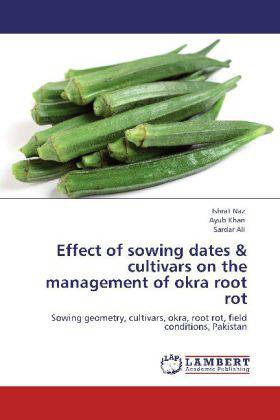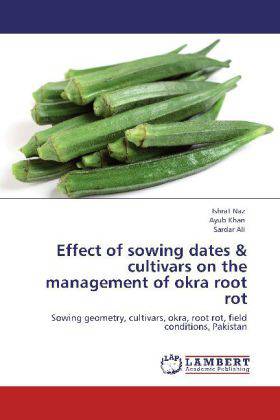
- Afhalen na 1 uur in een winkel met voorraad
- Gratis thuislevering in België vanaf € 30
- Ruim aanbod met 7 miljoen producten
- Afhalen na 1 uur in een winkel met voorraad
- Gratis thuislevering in België vanaf € 30
- Ruim aanbod met 7 miljoen producten
Zoeken
Effect of Sowing Dates & Cultivars on the Management of Okra Root Rot
Sowing geometry, cultivars, okra, root rot, field conditions, Pakistan
Ishrat Naz, Ayub Khan, Sardar Ali
Paperback | Engels
€ 48,45
+ 96 punten
Omschrijving
Okra is considered one of the best vegetable and always fetchs high prices in the market due to its taste and edible constituents. But it is susceptible to various fungal diseases such as Fusarium solani, Macrophomina phaseolina, Rhizoctonia bataticola, R. solani, Pythium butleri, Phytophthora palmivora, Cercospora abelmoschii and Erysiphe cichoracearum. Okra root rot is caused by the fungus Fusarium solani (Mart) Sacc. According to reports the root rot is one of the most destructive diseases. Its incidence ranged between 10-80%, with a maximum (55-80%) in the crop grown on small scale as kitchen /home gardening and minimum (10-45%) in the crop sown on large scale under field conditions. The book in hand can furnish valuable information on varieties Vs. sowing geometry and can be usual for researchers, vegetable growers and agriculturist.
Specificaties
Betrokkenen
- Auteur(s):
- Uitgeverij:
Inhoud
- Aantal bladzijden:
- 60
- Taal:
- Engels
Eigenschappen
- Productcode (EAN):
- 9783847308973
- Verschijningsdatum:
- 5/12/2011
- Uitvoering:
- Paperback
- Formaat:
- Trade paperback (VS)
- Afmetingen:
- 152 mm x 229 mm
- Gewicht:
- 99 g

Alleen bij Standaard Boekhandel
+ 96 punten op je klantenkaart van Standaard Boekhandel
Beoordelingen
We publiceren alleen reviews die voldoen aan de voorwaarden voor reviews. Bekijk onze voorwaarden voor reviews.











